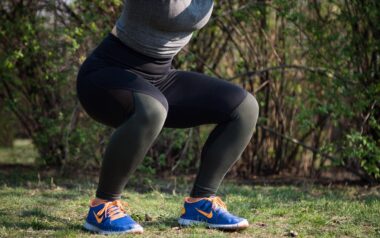How Often Should You Do Plyometric Training for Weight Loss?
Plyometric training has gained immense popularity as an efficient way to achieve weight loss. This type of training involves explosive movements, which can significantly elevate your heart rate. By incorporating plyometric exercises, you can burn calories quickly and effectively. However, determining how often you should engage in this kind of workout is essential for maximizing benefits while preventing injuries. A well-structured plyometric plan typically consists of two to three sessions per week. This frequency ensures that your body has ample time for recovery between workouts, which is crucial for muscle repair and growth. Rest days allow your muscles to absorb the strain of these high-intensity workouts. Additionally, listen to your body. Signs of fatigue or excessive soreness may indicate that you need to reduce the number of sessions or adjust your workout intensity. If you’re new to plyometric exercises, start with lower frequency and gradually increase as your body adapts. Always prioritize safety and proper technique to enjoy the full benefits of these powerful exercises, making them a sustainable part of your weight loss journey.
One of the main goals of plyometric training is to increase your overall athletic performance while shedding excess pounds. To do this effectively, you’ll want to balance your plyometric sessions with other types of workouts. Incorporating cardiovascular activities, such as running or cycling, can provide additional calorie burn and enhance your overall endurance. Strength training is equally important as it boosts your metabolism and promotes muscle growth. An optimal weekly exercise plan might consist of one to two days of plyometric workouts, followed by a couple of days dedicated to strength training, and some days reserved for cardio. It can include activities like jump squats, box jumps, or burpees. These explosive exercises help stimulate fast-twitch muscle fibers, leading to quicker gains in athleticism and calorie expenditure. For instance, jump squats effectively develop strength and explosiveness while burning fat. Remember that individual fitness levels vary, so it’s invaluable to adjust your training routine based on your specific needs. Ensure a combination of plyometric exercises with other regimes for a comprehensive approach to weight loss.
When planning your plyometric training schedule for weight loss, it’s essential to monitor your workout intensity. Plyometric exercises are demanding and should be performed with the right form to prevent injuries. Beginners should ease into this training style, focusing initially on mastering the proper movements without adding excessive volume. As you build confidence and strength, you can gradually increase the complexity and intensity of your routines. Using tools like timers can assist in structuring your sessions effectively. For instance, performing exercises like tuck jumps for 30 seconds followed by a rest of 30 seconds can help maintain intensity. This format can also create a higher calorie burn while allowing for manageable overloads. Additionally, I suggest using plyometric circuits for variety and thorough conditioning. These can combine several movements in a sequence, helping accelerate heart rates and burn more calories. By constantly challenging your body’s capabilities, you enhance performance while also promoting weight loss. Including intervals or circuits enhances not only your endurance but also stimulates the higher intensity required for effective plyometric training.
Your nutrition plays a vital role in the effectiveness of your plyometric training for weight loss. Fueling your body correctly before and after workouts ensures you have the energy to perform at your best. Consuming a balanced meal rich in carbohydrates and protein before your session provides the necessary fuel for explosive movements. After your workout, a meal with a mix of protein and carbs can aid in recovery. For example, a protein shake or a chicken salad can replenish your energy stores and set the stage for muscle growth. It’s also recommended to stay hydrated, as dehydration can significantly impact your performance and recovery. Include nutrient-dense foods in your diet, like fruits and vegetables, to support your overall health while engaging in intense plyometric workouts. Maintaining a caloric deficit will also accentuate weight loss. Keep track of your caloric intake and adjust as needed to ensure you’re in a weight loss phase. Pay attention to how your body responds to different foods and adjust your intake based on personal experiences with various meals and their energy effects.
Listening to Your Body
When implementing plyometric training into your routine, it’s crucial to listen to your body. This type of training can lead to fatigue or even minor injuries if overdone. Pay close attention to how your body reacts after each session. Individuals commonly report soreness after plyometric workouts, but they should not persist for long periods. It’s normal to feel tired, but sharp pain or sustained discomfort may indicate that you need to rest or modify your exercises. If you’re just starting, it’s advisable to schedule a recovery week every few weeks. During this time, focus on light activities like walking or gentle yoga to maintain an active lifestyle without straining your joints and muscles. Emphasizing proper mechanics is essential; focus on landings to absorb impact and reduce injury risks. Engaging a trainer or coach for feedback on your form can also provide valuable insights. Take the time after workouts to stretch and aid in recovery. These practices will improve your overall performance and encourage successful and sustainable weight loss.
Plyometric training can also be combined with other forms of exercise for enhanced weight loss effects. For example, circuit training can incorporate high-intensity cardio and plyometric drills to create a comprehensive workout. This approach boosts the calorie burn further and keeps your routine exciting. You may include exercises like jump lunges or plyometric push-ups in an overall fitness circuit, cycling through various exercises with little rest in between. Such workouts elevate the heart rate, encourage muscle conditioning, and keep your metabolism revving throughout the day. Employing different workout styles prevents monotony and maintains engagement. By continually challenging your muscles and cardiovascular system, you’ll increase strength and endurance while tearing down excess fat. Consider including flexibility and mobility workouts, like yoga or Pilates, as recovery sessions; doing so complements your plyometric training and will enhance overall performance. It’s crucial to develop your entire body, focusing not only on weight loss but also on maintaining functional strength and agility. This holistic approach leads to greater success in achieving desired weight loss goals.
Final Thoughts
Incorporating plyometric training into your weight loss journey has the potential to accelerate your results, provided you approach it with care. Understand your limits and gradually increase frequency and intensity as your body adapts to the demands of such workouts. Quality over quantity should be your mantra, ensuring you perform each movement with precision and purpose. Regular assessments of progress allow for adjustments in frequency, intensity, or types of movements you engage in. Remember, the ultimate goal is not just weight loss but also improved overall fitness and well-being. Maintain an open line of communication with any fitness professionals aiding you, and prioritize your physical and mental health above all else. In time, plyometrics can form an exciting and adaptive component of your fitness regimen. Remember, consistency is key. It’s better to have irregular yet well-executed sessions than frequent sessions lacking focus or energy. Combine this with proper nutrition and recovery strategies, and you’re likely to see notable progress not just on the scales but also in your physical capabilities.








